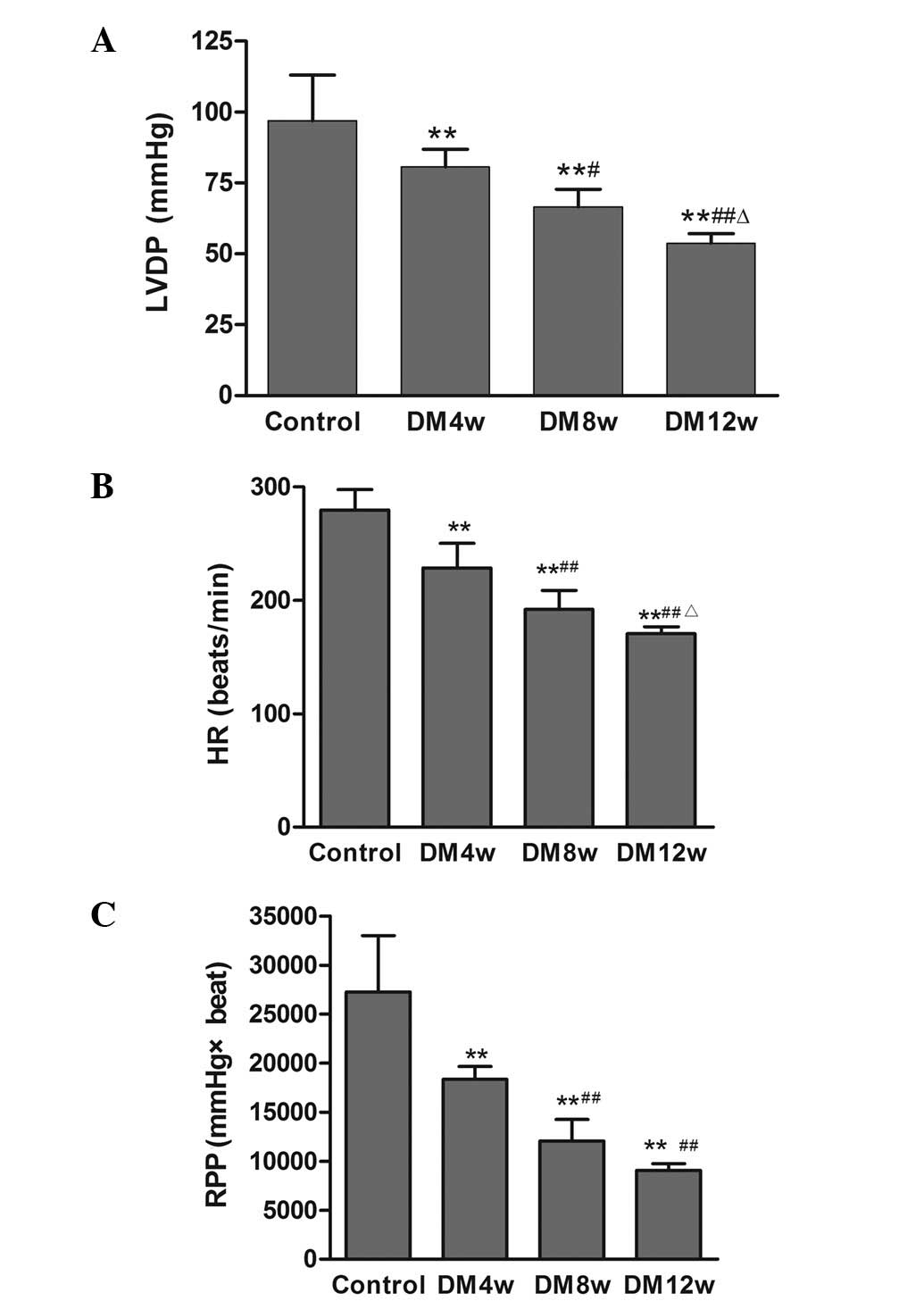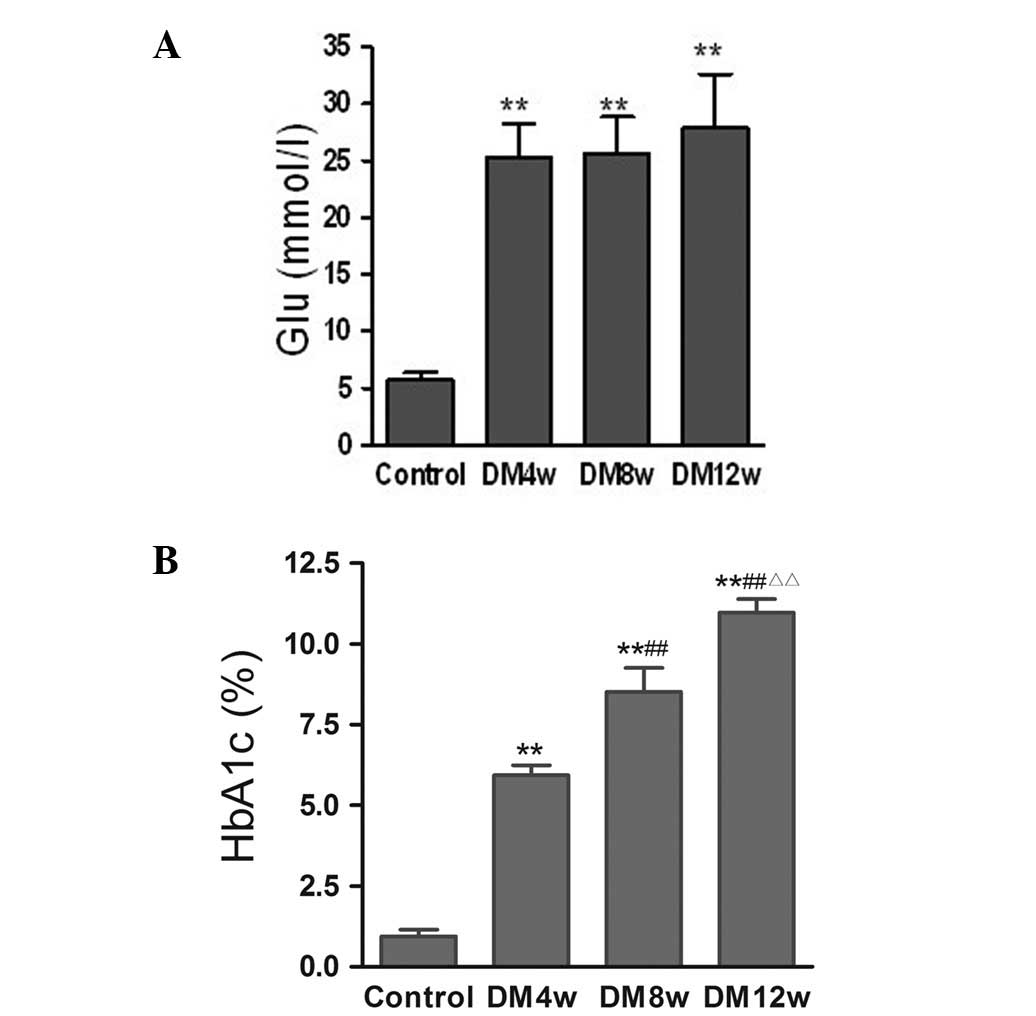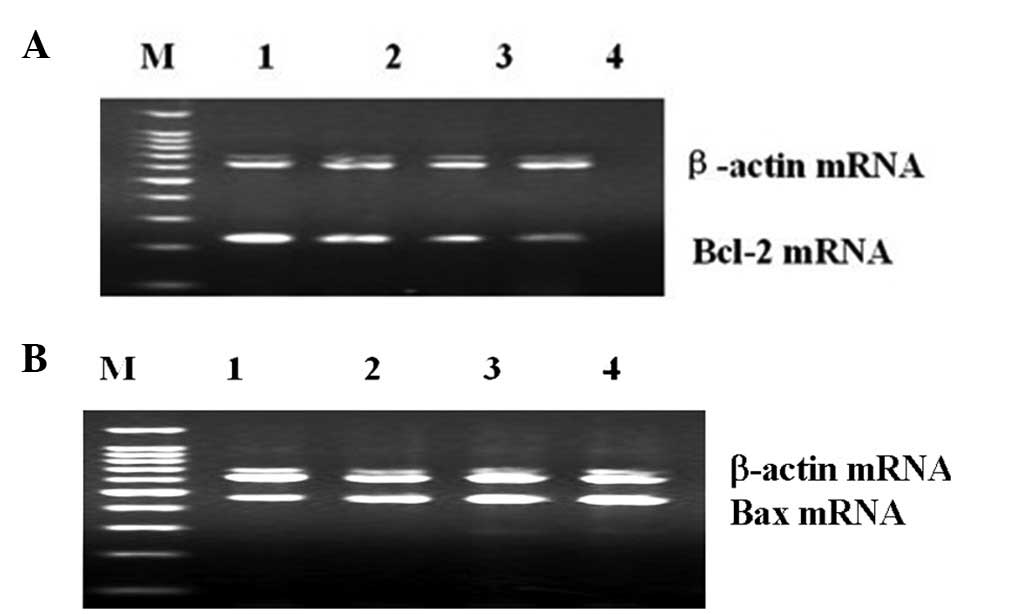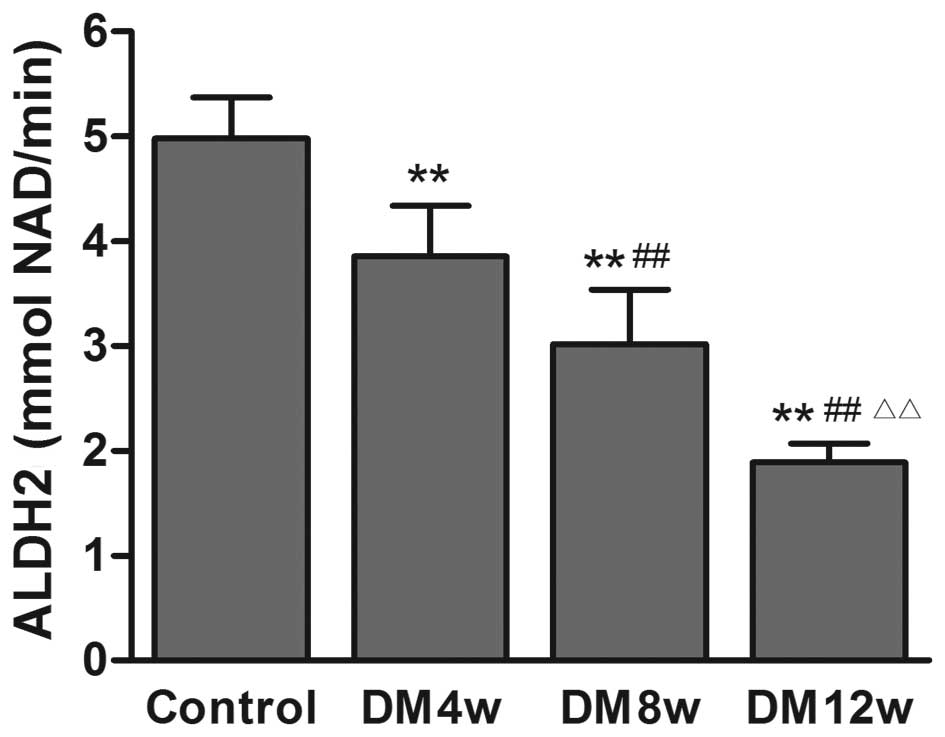|
1
|
Adeghate E, Schattner P and Dunn E: An
update on the etiology and epidemiology of diabetes mellitus. Ann N
Y Acad Sci. 1084:1–29. 2006. View Article : Google Scholar : PubMed/NCBI
|
|
2
|
Gremizzi C, Vergani A, Paloschi V and
Secchi A: Impact of pancreas transplantation on type 1
diabetes-related complications. Curr Opin Organ Transplant.
15:119–123. 2010. View Article : Google Scholar : PubMed/NCBI
|
|
3
|
Boudina S and Abel ED: Diabetic
cardiomyopathy revisited. Circulation. 115:3213–3223. 2007.
View Article : Google Scholar : PubMed/NCBI
|
|
4
|
Zgibor JC, Ruppert K, Orchard TJ,
Soedamah-Muthu SS, Fuller J, Chaturvedi N and Roberts MS:
Development of a coronary heart disease risk prediction model for
type 1 diabetes: the Pittsburgh CHD in Type 1 diabetes risk model.
Diabetes Res Clin Pract. 88:314–321. 2010. View Article : Google Scholar : PubMed/NCBI
|
|
5
|
Kaneto H, Katakami N, Matsuhisa M and
Matsuoka TA: Role of reactive oxygen species in the progression of
type 2 diabetes and atherosclerosis. Mediators Inflamm.
2010:4538922010. View Article : Google Scholar : PubMed/NCBI
|
|
6
|
Penckofer S, Schwertz D and Florczak K:
Oxidative stress and cardiovascular disease in type 2 diabetes: the
role of antioxidants and pro-oxidants. J Cardiovasc Nurs. 16:68–85.
2002. View Article : Google Scholar : PubMed/NCBI
|
|
7
|
Ren J: Acetaldehyde and alcoholic
cardiomyopathy: lessons from the ADH and ALDH2 transgenic models.
Novartis Found Symp. 285:69–79. 2007. View Article : Google Scholar : PubMed/NCBI
|
|
8
|
Budas GR, Disatnik MH and Mochly-Rosen D:
Aldehyde dehydrogenase 2 in cardiac protection: a new therapeutic
target? Trends Cardiovasc Med. 19:158–164. 2009. View Article : Google Scholar : PubMed/NCBI
|
|
9
|
Forman HJ, Fukuto JM, Miller T, Zhang H,
Rinna A and Levy S: The chemistry of cell signaling by reactive
oxygen and nitrogen species and 4-hydroxynonenal. Arch Biochem
Biophys. 477:183–195. 2008. View Article : Google Scholar : PubMed/NCBI
|
|
10
|
Petersen DR and Doorn JA: Reactions of
4-hydroxynonenal with proteins and cellular targets. Free Radic
Biol Med. 37:937–945. 2004. View Article : Google Scholar : PubMed/NCBI
|
|
11
|
Ma H, Li J, Gao F and Ren J: Aldehyde
dehydrogenase 2 ameliorates acute cardiac toxicity of ethanol: role
of protein phosphatase and forkhead transcription factor. J Am Coll
Cardiol. 54:2187–2196. 2009. View Article : Google Scholar : PubMed/NCBI
|
|
12
|
Doser TA, Turdi S, Thomasm DP, Epstein PN,
Li SY and Ren J: Transgenic overexpression of aldehyde
dehydrogenase-2 rescues chronic alcohol intake-induced myocardial
hypertrophy and contractile dysfunction. Circulation.
119:1941–1949. 2009. View Article : Google Scholar
|
|
13
|
Ge W, Guo R and Ren J: AMP-dependent
kinase and autophagic flux are involved in aldehyde
dehydrogenase-2-induced protection against cardiac toxicity of
ethanol. Free Radic Biol Med. 51:1736–1748. 2011. View Article : Google Scholar : PubMed/NCBI
|
|
14
|
Churchill EN, Disatnik MH and Mochly-Rosen
D: Time-dependent and ethanol-induced cardiac protection from
ischemia mediated by mitochondrial translocation of varepsilonPKC
and activation of aldehyde dehydrogenase 2. J Mol Cell Cardiol.
46:278–284. 2009. View Article : Google Scholar : PubMed/NCBI
|
|
15
|
Chen CH, Budas GR, Churchill EN, Disatnik
MH, Hurley TD and Mochly-Rosen D: Activation of aldehyde
dehydrogenase-2 reduces ischemic damage to the heart. Science.
321:1493–1495. 2008. View Article : Google Scholar : PubMed/NCBI
|
|
16
|
Budas GR, Disatnik MH, Chen CH and
Mochly-Rosen D: Activation of aldehyde dehydrogenase 2 (ALDH2)
confers cardioprotection in protein kinase C epsilon
(PKCvarepsilon) knockout mice. J Mol Cell Cardiol. 48:757–764.
2010. View Article : Google Scholar : PubMed/NCBI
|
|
17
|
Wang J, Wang H, Hao P, Xue P, Wei S, Zhang
Y and Chen Y: Inhibition of aldehyde dehydrogenase 2 by oxidative
stress is associated with cardiac dysfunction in diabetic rats. Mol
Med. 17:172–179. 2011.PubMed/NCBI
|
|
18
|
Larsen CM, Faulenbach M, Vaag A, Ehses JA,
Donath MY and Mandrup-Poulsen T: Sustained effects of interleukin-1
receptor antagonist treatment in type 2 diabetes. Diabetes Care.
32:1663–1668. 2009. View Article : Google Scholar : PubMed/NCBI
|
|
19
|
Zaitsev SV, Appelskog IB, Kapelioukh IL,
Yang SN, Köhler M, Efendic S and Berggren PO: Imidazoline compounds
protect against interleukin 1 beta-induced beta-cell apoptosis.
Diabetes. 50:70–76. 2001. View Article : Google Scholar : PubMed/NCBI
|
|
20
|
Tas SW, Remans PH, Reedguist KA and Tak
PP: Signal transduction pathways and transcription factors as
therapeutic targets in inflammatory disease: towards innovative
antirheumatic therapy. Curr Pharm Des. 11:581–611. 2005. View Article : Google Scholar : PubMed/NCBI
|
|
21
|
Lafaille JJ: The role of helper T cell
subsets in autoimmune diseases. Cytokine Growth Factor Rev.
9:139–151. 1998. View Article : Google Scholar : PubMed/NCBI
|
|
22
|
Hart PH, Jones CA and Finlay-Jones JJ:
Interleukin-4 suppression of monocyte tumour necrosis factor-alpha
production. Dependence on protein synthesis but not on cyclic AMP
production. Immunology. 76:560–565. 1992.PubMed/NCBI
|
|
23
|
Zhang M and Shah AM: Role of reactive
oxygen species in myocardial remodeling. Curr Heart Fail Rep.
4:26–30. 2007. View Article : Google Scholar : PubMed/NCBI
|
|
24
|
Lee Y and Gustafsson AB: Role of apoptosis
in cardiovascular disease. Apoptosis. 14:536–548. 2009. View Article : Google Scholar : PubMed/NCBI
|
|
25
|
Stewart MJ, Malek K and Crabb DW:
Distribution of messenger RNAs for aldehyde dehydrogenase 1,
aldehyde dehydrogenase 2, and aldehyde dehydrogenase 5 in human
tissues. J Investig Med. 44:42–46. 1996.PubMed/NCBI
|
|
26
|
Esterbauer H, Schaur RJ and Zollner H:
Chemistry and biochemistry of 4-hydroxynonenal, malonaldehyde and
related aldehydes. Free Radic Biol Med. 1:81–128. 1991. View Article : Google Scholar : PubMed/NCBI
|














